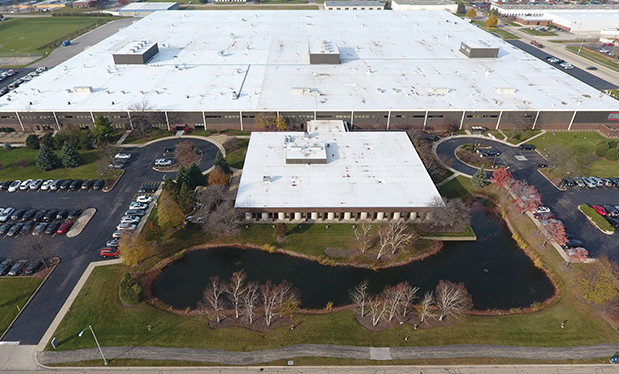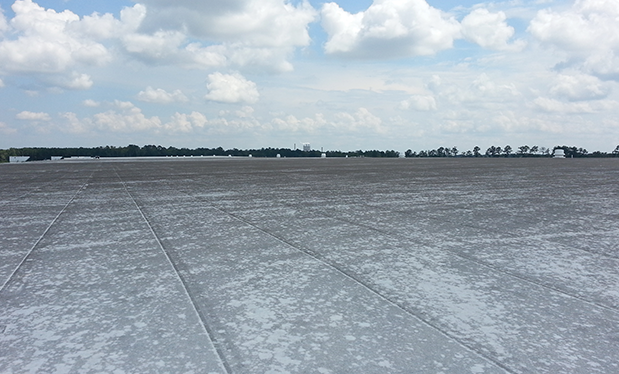In April, NRCA published a new edition of NRCA Guidelines for Asphalt Shingle Roof Systems, which provides NRCA's latest best practice guidelines applicable to the design and application of asphalt shingle roof systems.
Document overview
Recognizing the publication will not be read cover to cover like a novel, NRCA formatted the guidelines to be used as a reference manual. For example, Chapter 1—Roof System Configurations provides detailed descriptions of 16 variations of four common asphalt shingle roof system configurations used for new construction, roof system replacement and roof re-cover, and it directs users to more detailed information in subsequent chapters.
Separate appendices are provided addressing condensation control and ventilation for steep-slope roof assemblies, quality control and quality-assurance guidelines of the installation of asphalt shingle roof systems, roof accessories, radiant barriers and unit conversions.
Best practices
NRCA's approach is similar to what has been done with The NRCA Roofing Manual. As a result, some of NRCA's recommendations contained in the asphalt shingle publication are more stringent than building codes' minimum requirements or manufacturers' installation instructions.
For example, in Chapter 2—Roof Decks, NRCA recommends the use of minimum nominal 1/2-inch-thick plywood or oriented strand board (OSB) sheathing for 16-inch rafter spacings and minimum nominal 5/8-inch-thick plywood or OSB sheathing for 24-inch rafter spacings for asphalt shingle installations. Some building codes and manufacturers' installation instructions allow asphalt shingle application on roof decks as thin as 3/8-inch-thick. NRCA bases its more conservative recommendation on field experience with long-term, successfully performing asphalt shingle roof systems.
Also in Chapter 2, NRCA recommends roof deck slope for asphalt shingle roof systems be a minimum of 4:12. Some building codes and manufacturers' installation instructions allow asphalt shingle application on roof slopes as low as 2:12. Again, NRCA's more conservative recommendation is based on field experience and concern for water backup caused by wind-driven rain or ice damming, particularly with low-slope asphalt shingle roof areas with valleys or roof system penetrations.
In Chapter 3—Underlayment, NRCA recommends a water and ice-dam protection membrane be used at eaves in locations where the average temperature for January is 30 F or below or in areas that have a history of ice damming. Furthermore, NRCA recommends a water and ice-dam protection membrane be applied starting at a roof system's eaves and extend upslope to a point corresponding to a minimum of 24 inches—determined in the level plane—inside the exterior wall line of the building. The membrane also should extend up any adjoining walls to the top of the flashings.
Some building codes and manufacturers' installation instructions vary, and some are unclear regarding their requirements and recommendations for water and ice-dam protection membrane usage. NRCA's recommendations are more specific and, in some instances, more conservative.
In Chapter 4—Asphalt Shingles, NRCA recommends designers specify crickets at the upslope side of chimneys or curbed roof penetrations when the chimney or curb is more than 24 inches wide. This recommendation is more stringent than some codes, which indicate a cricket should be installed on the ridge side of any chimney or penetration greater than 30 inches wide as measured perpendicular to the slope.
Also in Chapter 4, NRCA provides minimum metal thicknesses for drip edge metal, metal valleys and metal flashings. For example, NRCA recommends a minimum 26-gauge galvanized or prefinished galvanized steel or 0.032-inch-thick aluminum or prefinished aluminum be used for drip edge metal. NRCA recognizes thinner drip edge metal commonly is available in some regions.
Appendix 4—Radiant Barriers discusses radiant barrier usage in steep-slope roof assemblies. NRCA recommends radiant barriers specifically not be used with asphalt shingle roof systems. NRCA is concerned a radiant barrier can reflect a portion of the solar radiant energy back through the underlayment and asphalt shingles, resulting in a potential accelerated aging effect to asphaltic materials. Because some building codes and manufacturers' installation instructions do not specifically prohibit radiant barrier usage with asphalt shingle roof systems, NRCA's recommendation can be considered more conservative.
Getting it
NRCA's new asphalt shingle publication is well-suited to designers and installers of asphalt shingle roof systems in single-family and multifamily residential applications and for asphalt shingle usage in commercial and industrial applications. NRCA members can download the publication free from NRCA's bookstore, shop.nrca.net, or via NRCA's app.
A hard-copy version of the document is available for purchase from NRCA's bookstore, shop.nrca.net.
Mark S. Graham is NRCA's vice president of technical services.
@MarkGrahamNRCA



